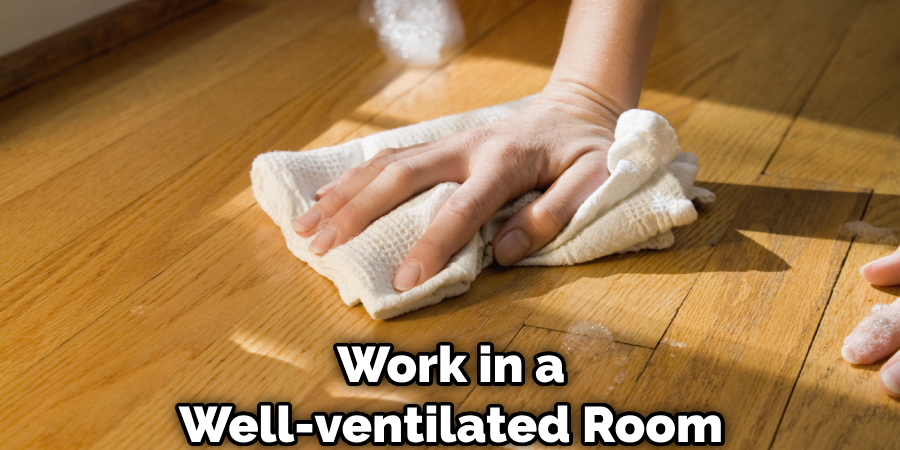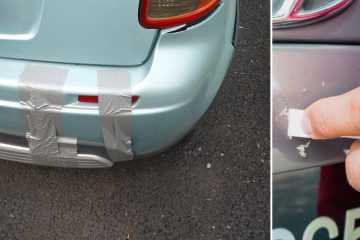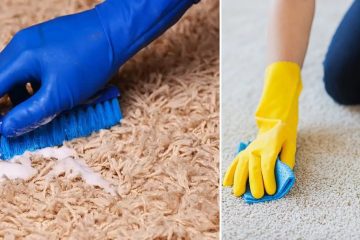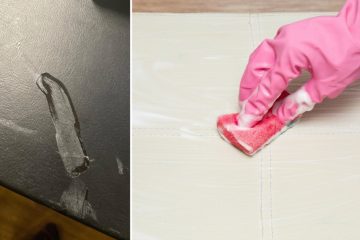Installing beautiful new hardwood flooring can be thrilling, but the excitement may diminish when you notice globs of excess powerful glue stuck to the wood floor after the job is done. Getting rid of glue on hardwood floors can seem daunting, but have no fear – with the right techniques and products, you can safely remove stubborn adhesive without damaging your flooring. In this comprehensive guide, we’ll go over everything you need to know how to remove glue from hardwood floor installation and restore their flawless finish.

Key Takeaways:
- Assess glue type and condition first
- Use proper tools – plastic scraper, heat gun, glue remover
- Test products and take safety precautions
- Allow time for the glue to soften before gently scraping
- Let the floor dry completely after, 24+ hours before use
5 Ultimate Steps for How to Remove Glue From Hardwood Floor Installation
Here are the four steps you need to take how to remove glue from hardwood floor installation:
What You’ll Need
Before tackling glue removal, gather the proper supplies:
- Plastic putty knife or scraper – avoids scratching the wood flooring
- Heat gun – softens and loosens dried glue
- Mineral spirits or adhesive remover – dissolves sticky residues
- Clean cloths – for wiping away glue
- Sandpaper (optional) – helps smooth out stubborn patches
It’s also a good idea to have safety gear on hand:
- Gloves – protect your hands from irritants
- Eye protection – prevents eye irritation from fumes
- Ventilation – open windows or use fans for fresh air
Step 1: Before Starting
Before getting started, test any product you plan to use in an inconspicuous area first. This ensures it will not damage the wood floor finish. It’s also critical to work in a well-ventilated room when using solvents or heat to avoid inhaling harmful fumes.

Step 2: Removing Different Types of Glue
The technique you use depends on the type and condition of the adhesive you need to eliminate.
A. Dried Glue
For super glue or other rigid, dried adhesive, place an ice pack directly on the glue for 5-10 minutes. This makes the glue cold and brittle so it will crack and lift off the floor more easily when gently pried with a plastic putty knife. You can also use a heat gun to soften old adhesive and make it easier to scrape off once gooey. Just be careful not to scorch the wood flooring.
If it’s just a small amount of standard glue, you may be able to remove it with a damp cloth and a bit of light scrubbing. This super glue removal method works best on fresh spills before the glue has fully dried.
B. Carpet and Tile Adhesives
To remove sticky carpet or tile adhesives, mineral spirits work well to dissolve tar-based glues after soaking for 5-10 minutes. For latex-based adhesives, an orange oil remover is ideal. Apply the solvent then let it soak in for the recommended time before gently scraping off the softened glue with a plastic putty knife. Go slowly to avoid gouging the floor.
Step 3: Small Residue Amounts
For small leftover sticky spots, dab some vinegar onto the glue and let it sit briefly to help break down the adhesive. Then scrub with a damp cloth to wipe away any remaining sticky residue. The vinegar dissolves the last of the adhesive.
Step 4: Stubborn Adhesive Patches
If you have patches of old adhesive that won’t budge, you can carefully sand them away with an orbital sander and 60-80 grit sandpaper. Apply light pressure and avoid digging into the wood floor itself. Wipe away all sanding dust thoroughly after finishing.

Step 5: After Removing Glue
Once all the adhesive is gone, let your hardwood floors dry completely for at least 24 hours before walking on them or applying any new finish. Make sure to dispose of any rags, glue, and solvents properly as well.
4 Tips for Avoiding Excess Glue
While removing dried adhesive can be tedious, there are things you can do to avoid getting glue on your wood floors in the first place:
- Choose quality flooring adhesive designed not to seep
- Use small amounts and apply carefully with adhesive trowel
- Clean up any spills immediately before glue dries
- Have removal supplies on hand just in case

FAQs About How to Remove Glue From Hardwood Floor Installation
What Kind of Glue is Easiest to Remove?
Fresh, non-dried white glue is typically the easiest to remove with just water or a damp cloth. Dried glue is harder to remove, but super glue and hot glue tend to be more brittle when dried, making them easier to chip/scrape away.
How Can I Avoid Getting Glue on My Floors During Installation?
Be careful when applying the adhesive and use a trowel to spread thin, even layers. Clean up spills right away before they dry. Use masking tape around the edges for a cleaner installation. Choose quality flooring adhesive designed not to seep through cracks.
Is There a Homemade Solution for Removing Glue?
Home remedies like vinegar, vegetable oil, and mayonnaise can help dissolve glue residues. Just rub a small amount on the glue, let it sit briefly, then wipe away. Always test first to avoid damaging finishes.
Will Acetone Damage Hardwood Floors?
Acetone can damage hardwood floors as it is a strong solvent that can dissolve finishes and paints. To minimize the risk, it’s important to test acetone in an inconspicuous area, use it sparingly for spot cleaning, and immediately wipe the area clean with a damp cloth. For general cleaning, it’s best to use a hardwood floor cleaner recommended by the floor manufacturer, and for tough stains, consider mild detergents or specialized hardwood floor cleaners. Following the manufacturer’s guidelines for cleaning and maintenance is crucial, and consulting a professional for specific advice is advisable when in doubt.
What Dissolves Flooring Glue?
Flooring glue can be dissolved using various methods, including the application of heat using a heat gun or hair dryer to soften the glue for easier removal, the use of solvents such as acetone or mineral spirits, and the application of white vinegar to break down certain types of flooring glue. Additionally, commercial adhesive removers specifically designed for this purpose are available and should be used following safety precautions and after testing in a small area to ensure they won’t damage the flooring material.
What is the Best Way to Remove Floor Adhesive?
The best ways to remove floor adhesive include using a heat gun or hair dryer to soften the adhesive for easier scraping, applying solvents like acetone or mineral spirits to dissolve the adhesive, utilizing commercial adhesive removers designed for this purpose, and employing mechanical methods such as floor scrapers or oscillating tools with scraping accessories. It’s crucial to ensure proper ventilation, follow safety precautions when using solvents or removers, and test them in a small area to prevent damage to the flooring material.
Conclusions
With the right technique and a little patience, you can successfully remove glue from your beautiful wood flooring. Just remember to always test products first in an inconspicuous area and take safety precautions. Your persistence will pay off when you reveal a clean, glue-free hardwood floor.


